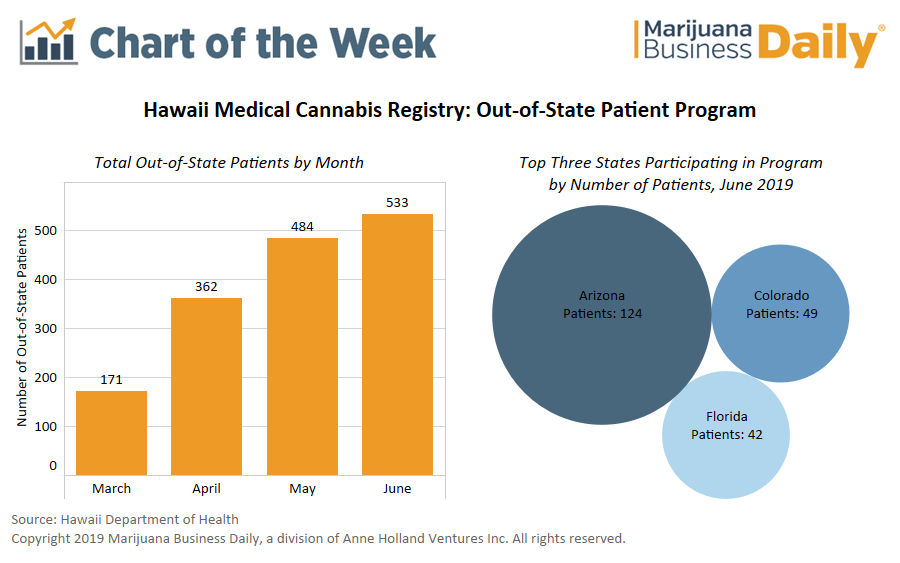A new Washington state law has marijuana cultivators concerned over the potential of cross-pollination from hemp growers, which could prove disastrous to their bottom line if it occurs – potentially costing them up to tens of thousands of dollars in damages.
In April, Gov. Jay Inslee signed Senate Bill 5276 into law, opening up the state to hemp production in response to the 2018 Farm Bill, particularly by removing the previous 4-mile buffer between outdoor marijuana and hemp farms.
With this change, hemp industry watchers expect a proliferation of hemp cultivation in the state, which has only a dozen farms compared with the 750 of Oregon.
He pointed out there are more than 1,000 marijuana growers in Washington State compared to the relatively few hemp growers.
While final rules have not been released, primary concerns include:
- Hemp fields with both male and female plants could send airborne pollen into marijuana fields and cause flowering female plants to seed, which would make the MJ flower unattractive to retail stores and less valuable for extraction.
- Will hemp farmers have the resources, including adequate labor, to remove all the male plants from larger-scale farms? Will day laborers and seasonal help be able to even distinguish between the two plant genders?
- Marijuana farms that cross-pollinate hemp fields, meanwhile, could cause the hemp THC levels to spike over 0.3%, though the potential for risk there is small and would take another growing season for that to show up.
Marijuana growers already struggling
After the change in the law, the Washington State Department of Agriculture (WSDA) and the Liquor and Cannabis Board are expected to review the potential risk for cross-pollination.
Under the new law, the farmer who was on their land and operating first would win a dispute over possible cross-pollination.
The majority of current hemp production nationwide is geared toward the CBD market.
According to the 2018 Hemp & CBD Industry Factbook, about 84% of hemp was planted for the CBD market in 2017.
However, the small percentage of hemp farmers who grow for grain and fiber plant both male and female seedlings to encourage seed production, and those farms could have a dramatic negative impact on neighboring cannabis cultivation operations.
Shortt cautioned against jumping to conclusions about how this could impact the industry, since the final regulations have yet to be released.
He expects state lawmakers could wait for federal guidance before making related rules.
Also, an amendment to SB 5276 would allow the WSDA to reimpose the setbacks, though that remains to be seen.
Shortt understands why cannabis growers are concerned over the potential for cross-pollination in light of the struggles they’re already facing.
Wholesale prices for marijuana have continuously declined since Washington state legalized recreational marijuana in 2014.
“It’s really competitive and difficult to successfully operate a marijuana facility, and even if (cross-pollination) could ruin one crop, that could be devastating,” Shortt said.
“When things are so competitive and the margins are so thin, it’s reasonable to be concerned over something like this.”
One county zones out hemp
Anders Taylor cultivates sun-grown marijuana in Okanogan County, a region in the state with several outdoor marijuana farms.
He said the county zones hemp production to tribal lands only out of concerns about cross-pollination and the impact it could have on the cannabis growers.
Seeing what was coming, the growers in his county worked with the county commissioners so they wouldn’t be in the same position as the rest of the state if the 4-mile setback was removed.
“There are a lot of other areas in the state that are on pins and needles about where hemp farmers are going to locate,” said Taylor.
“The rest of the state is running into a potential issue.”
While Taylor acknowledges that the majority of hemp production is directed toward CBD and the female plants needed to create flower, he still sees it as marijuana growers placing their faith in neighboring hemp farmers to do the right thing.
He gave this example: If a nearby hemp grower plants 50 acres and doesn’t have the time, money or laborers with the know-how to remove the male plants, then the potential for cross-pollination is high.
“If a hemp farm is within a few miles of a marijuana farm and it’s growing a lot of male plants, it will create enough pollen to significantly damage that marijuana crop,” Taylor said.
Although he acknowledges that a savvy hemp farmer would remove the male plants – CBD buyers will pay less for hemp plants with seeds in them, for instance – that’s no guarantee.
“You would lose money by leaving them in,” Taylor said.
Also, if the hemp farmer is growing for seed and fiber, the risk for cross-pollination and destruction to the marijuana grower’s field goes up considerably.
‘CBD-driven’ market
Cory Sharp, a hemp farmer and consultant based in Moses Lake, restated the point that the majority of the hemp market at the moment is focused on CBD, meaning that most hemp farmers are growing females using feminized seed, the same as marijuana growers.
Sharp doesn’t see much of a risk for hemp growers who are considering planting next to a marijuana farm.
He isn’t concerned that cross-pollination from a marijuana farm could make hemp test “hot,” or over 0.3% THC.
Marijuana farmers with neighbors growing small amounts of hemp say that 5-20 acres shouldn’t be too concerned, according to Sharp, because the effort required to remove the males from smaller fields isn’t burdensome.
But a hemp farmer with 200 acres will find removing all the male plants challenging.
“This harvest season is going to be interesting,” Sharp said. “There’s going to be some fights.”
Bart Schaneman can be reached at barts@mjbizdaily.com





